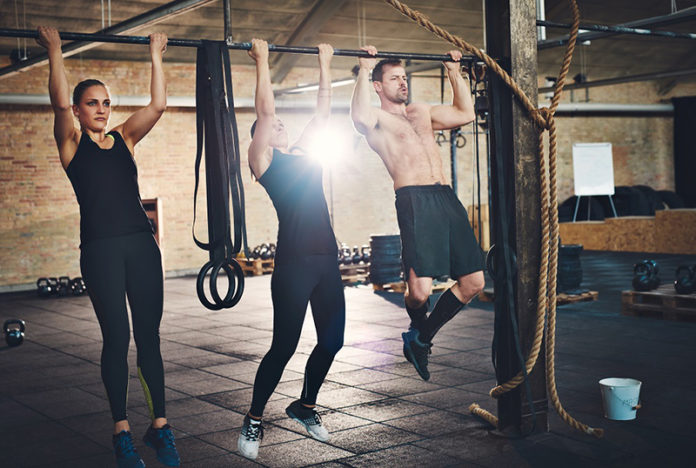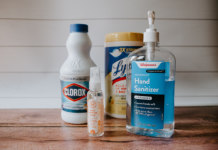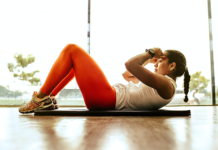As a reader of my blog, you know what a strong proponent I am of regular exercise. Its positive effects are physical, mental, and even emotional. Joining a gym is a simple way to ensure you always have a place to exercise, rain or shine. Gyms provide a wide variety of exercise types, and often group classes, to help you avoid boredom and achieve a well-rounded fitness regimen.
Even though lots of good can come from a gym routine, you should be aware of potential downsides. I’ve previously written about a wide range of issues with gyms, from the high cost of unused memberships to the presence of triclosan in those hygienic wipes. For today, let’s zero in on those germs. With growing concerns about infectious diseases like measles, it’s a good time to review precautions.
Where Germs Live at the Gym
The International Journal of Environmental Research and Public Health published a study on germs in fitness centers in 2014. Researchers Mukherjee, et. al, found 25 different types of bacteria lurking in fitness centers in Memphis. Bacteria didn’t show up only in the showers and saunas either. Theirs is just one of the numerous studies that show the prevalence of harmful pathogens in gyms.
Fortunately, there are ways to protect yourself if you’re aware of the potential for infection. Learn what bacteria, viruses, and fungi might lurk at your fitness center and how to avoid them.
Flu Viruses
Anytime lots of people gather in a closed environment, risk of infection rises. You can get it at any time, but winter is the worst. Flu season tends to peak around January and February–about the same time new gym memberships peak, thanks to all of those well-intentioned new year’s resolutions! It’s also when people who live in cold climates will opt for indoor workouts over a trail run or bike ride.
The flu virus can survive on surfaces for two days. That means, if you touch a piece of gym equipment after someone with the flu has sneezed or coughed on it, then touch your eyes, nose or mouth, you’re at risk. You can minimize that risk by wiping down equipment, however, those wipes can contain some nasty stuff themselves. Ask the management at your gym how they clean the equipment, and how often.
Staphylococcus Bacteria
Staphylococcus bacteria are the culprit in diseases like MRSA. They’re among the most common germs hanging out in gyms because they thrive in crowded areas. Places where skin-to-skin contact occurs or sharing equipment and supplies increase your risk for contracting staph. If you’re into contact sports, like basketball, make sure that you don’t have any open cuts, knicks, or wounds. Additionally, you should wash your body thoroughly after playing.
To prevent the spread of staph or MRSA, the CDC recommends that you avoid sharing personal items. Bring your own towels to the gym, never share razors or clothing, and always wash your sweaty clothes immediately after working out.
Ringworm
According to the National Institutes of Health, fungal infections affect an estimated 29 million people nationwide. Fungal infections like ringworm can occur anywhere on your body like your neck, arms, legs, stomach, and chest. Symptoms include red, scaly, and/or itchy skin, a rash and hair loss.
You can prevent ringworm by wearing proper shoes in the gym, keeping your shoes on in the sauna, and designating a pair of flip flops to be worn in the shower. Never walk barefoot anywhere in the gym. Wash your hands with soap and water after working out where skin-to-skin contact occurred. Finally, always wash your clothing after sweating or working out.
Athlete’s Foot
Another common fungal infection that thrives in warm, dark and moist environments. Gym locker rooms, dirty gym socks, and shoes are some of the common places you’ll find this fungus thriving in. You can contract this fungus through being barefoot but the worst offender? Wearing the same dirty socks after a long day at the gym. Even if your socks are dried out and seem “clean” put on a fresh pair– you’ve earned that much.
Plantar Warts
There are more than 100 types of human papillomavirus (HPV), which is why it’s not uncommon for someone to have the virus but never know it. While you may be familiar with the virus because of genital warts, it can manifest as plantar warts on your feet. These warts can be painful and uncomfortable when you put weight on them.
Don’t let this article keep you away from the gym. As long as you’re mindful about what you’re wearing at the gym, regularly wash your gym wear, and sanitize your equipment before and after use, you will be safe. If you notice breaks or tears in the equipment fabric, notify your gym’s staff so they may repair it. Here’s to a happy, healthy and fit you!








